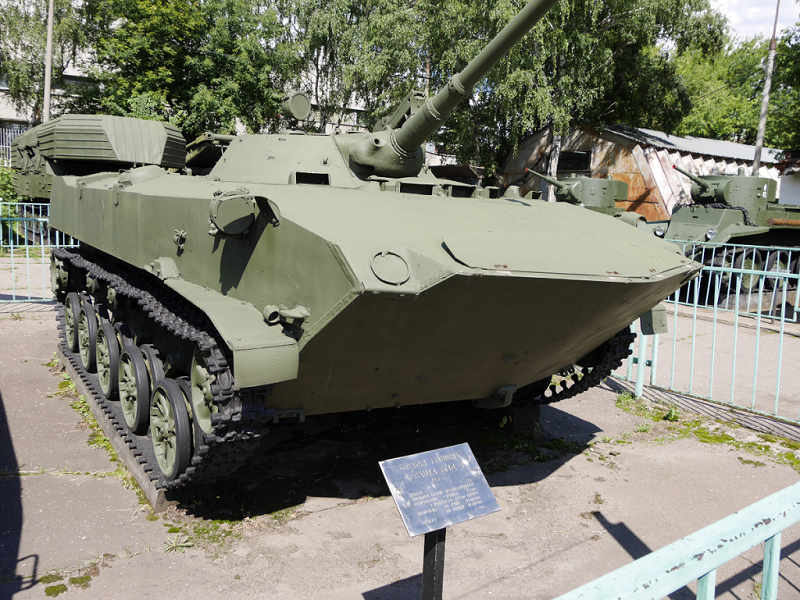The BMD-1. Armor – bulletproof. Speed on land – 61 km / h, on water – 10 km / h. Crew – 7 people.
Museum of the Soviet Army, Moscow
The BMD-1 is a Soviet airborne amphibious tracked infantry fighting vehicle, which was introduced in 1969 and first seen by the West in 1970. BMD stands for Boyevaya Mashina Desanta (Боевая Машина Десанта, which literally translates to “Combat Vehicle of the Airborne”).
It can be dropped by parachute and although it resembles the BMP-1 it is in fact much smaller. The BMD-1 was used as an IFV by the Soviet Army’s airborne divisions. An improved variant of the BMD-1 was developed, the BMD-2. The BMD-1 also provided a basis for the BTR-D airborne multi-purpose tracked APC.
In the wake of the Cuban Missile Crisis, the army was instructed to consider putting more emphasis on means to project power outside of the normal sphere of Soviet influence. As a result, there was a major effort to develop the VDV (Soviet airborne forces) as a rapid deployment force. Soviet studies of airborne operations had shown that lightly armed paratroops were unable to deal with armoured forces. Also, in the early 1960s, the BMP-1 infantry fighting vehicle was being developed. Before the BMP-1 entered service in 1966, the Soviet Army high command decided to equip the newly created airborne divisions with similar vehicles.
Manufacturer: Volgograd Tractor Plant












